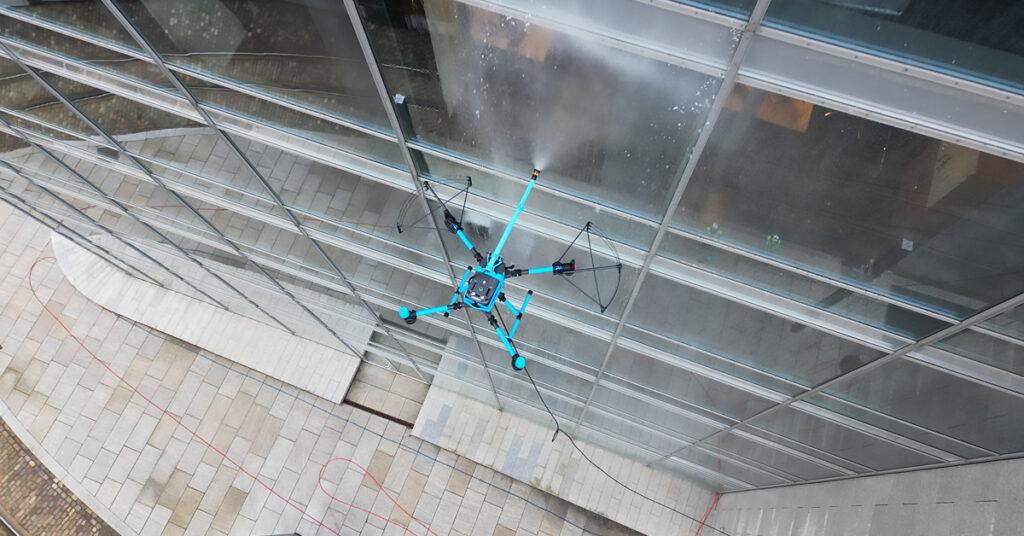With urbanization driving the development of dense downtown cores, building maintenance has become increasingly challenging. Among the most demanding tasks is keeping high-rise windows and facades clean and safe. Drones, however, are transforming this essential service with efficiency and safety in mind.
I recently had the opportunity to have an individual in one of my training classes who was working for a High and Soft Pressure Washing Drone company out of Vancouver, BC.
I had nothing but questions about the intricacies’ as to how a drone window washing company would work in a densely populated urban environment. I have to say that I learned a great deal about how these innovative companies are leveraging drone technology to help keep workers safe, while increasing the number of service calls that can be completed in a typical work week. Listed below are the top five reasons why these companies chose to implement drone technology.
Top Five Reasons to Implement Drone Technology in Urban Landscape Window Cleaning:
1. Enhanced Safety for Workers: Traditional window cleaning methods often involve high-risk tasks, with workers scaling the sides of tall buildings. Drones reduce the need for human workers to operate at dangerous heights, minimizing the potential for accidents. In densely populated areas, this is especially critical, as a safer operation reduces the risk to both workers and pedestrians below.
2. Greater Efficiency and Speed of Services: Drones can navigate complex building facades with ease, cleaning windows and surfaces more quickly than manual methods. They can access difficult-to-reach areas, like corners and edges, without the need for scaffolding or ropes. This translates into faster turnaround times for building owners and management companies.
3. Reduced Operating Costs: By eliminating the need for extensive equipment such as cranes, scaffolding, and safety gear, drones can significantly lower the overall cost of window and facade cleaning. Fewer labor hours are required as well, resulting in savings for building owners—particularly in areas where labor costs are high, like downtown cores.
4. Minimal Disruption to Urban Life: In densely populated downtown areas, scaffolding and high-rise cleaning setups can cause significant disruption to pedestrian traffic and businesses. Drones, on the other hand, are small, unobtrusive, and can operate with minimal setup, allowing businesses to continue operating with fewer interruptions.
5. Eco-Friendly Cleaning Solutions: Many drones used for cleaning are equipped with water-efficient systems, reducing water waste. Some also incorporate non-toxic cleaning solutions, which are less harmful to the environment compared to traditional chemicals. This aligns with the growing trend toward sustainability in urban planning and maintenance.
Bonus Advantage:
6. Improved Data Collection and Building Monitoring: Many modern drones are equipped with high-resolution cameras and sensors that can capture detailed data on a building’s condition. This allows for real-time monitoring of facade wear and tear, detecting potential issues like cracks or leaks before they become major problems. Building managers can now integrate cleaning services with preventative maintenance.
As cities continue to grow vertically, drones are proving to be a powerful tool for keeping buildings clean and safe. They offer an efficient, cost-effective, and safer alternative to traditional cleaning methods, and their advantages in densely populated downtown areas are clear. It’s only a matter of time before drone technology becomes the standard in building maintenance.



